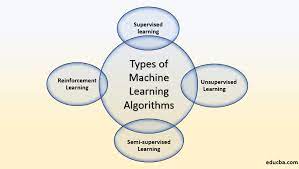Machine learning models can improve their performance over time with new data by leveraging a process called “training” or “retraining.” Here’s a general overview of how this improvement can occur:
- Training Phase: Initially, a machine learning model is trained using a labeled dataset, known as the training dataset. The model learns patterns, relationships, and features from this data to make predictions or classifications. During training, the model adjusts its internal parameters based on the input data and the desired output.
- Evaluation Phase: After training, the model is evaluated using a separate dataset called the validation dataset or test dataset. This dataset contains labeled examples that the model hasn’t seen during training. The model’s performance is assessed by comparing its predictions to the known labels in the validation dataset. Evaluation metrics like accuracy, precision, recall, or F1 score are calculated to measure the model’s performance.
- Iterative Improvement: Based on the evaluation results, the model’s performance is analyzed, and adjustments are made to enhance its capabilities. Several techniques can be employed to improve the model:a. Model Architecture: The structure of the model can be modified, such as adding more layers or changing the network’s parameters, to improve its ability to capture complex patterns.b. Hyperparameter Tuning: Hyperparameters, which are not learned from data but set before training, can be adjusted to optimize the model’s performance. Examples include learning rate, batch size, regularization parameters, and network architecture choices.c. Feature Engineering: The input features used by the model can be refined or expanded to better represent the underlying patterns in the data. This process involves selecting relevant features, transforming data, or creating new features.d. Data Augmentation: Additional training data can be generated through techniques like data augmentation, where existing data is artificially expanded by applying transformations or perturbations to the original examples. This helps the model generalize better and handle variations in the input data.
- Retraining: Once the necessary adjustments are made, the model is retrained using an updated dataset that includes both the original training data and new labeled examples. This process allows the model to learn from the new data while retaining the knowledge gained from the previous training.
- Deployment: The improved model is then deployed to make predictions or classifications on new, unseen data in real-world scenarios. The process of collecting feedback from the model’s performance in production can provide insights for further iterations and improvements.
By iteratively going through the training, evaluation, adjustment, and retraining cycle, machine learning models can adapt to new data, refine their predictions, and continuously improve their performance over time. This iterative improvement process is crucial for building robust and accurate machine learning models.
SHARE
